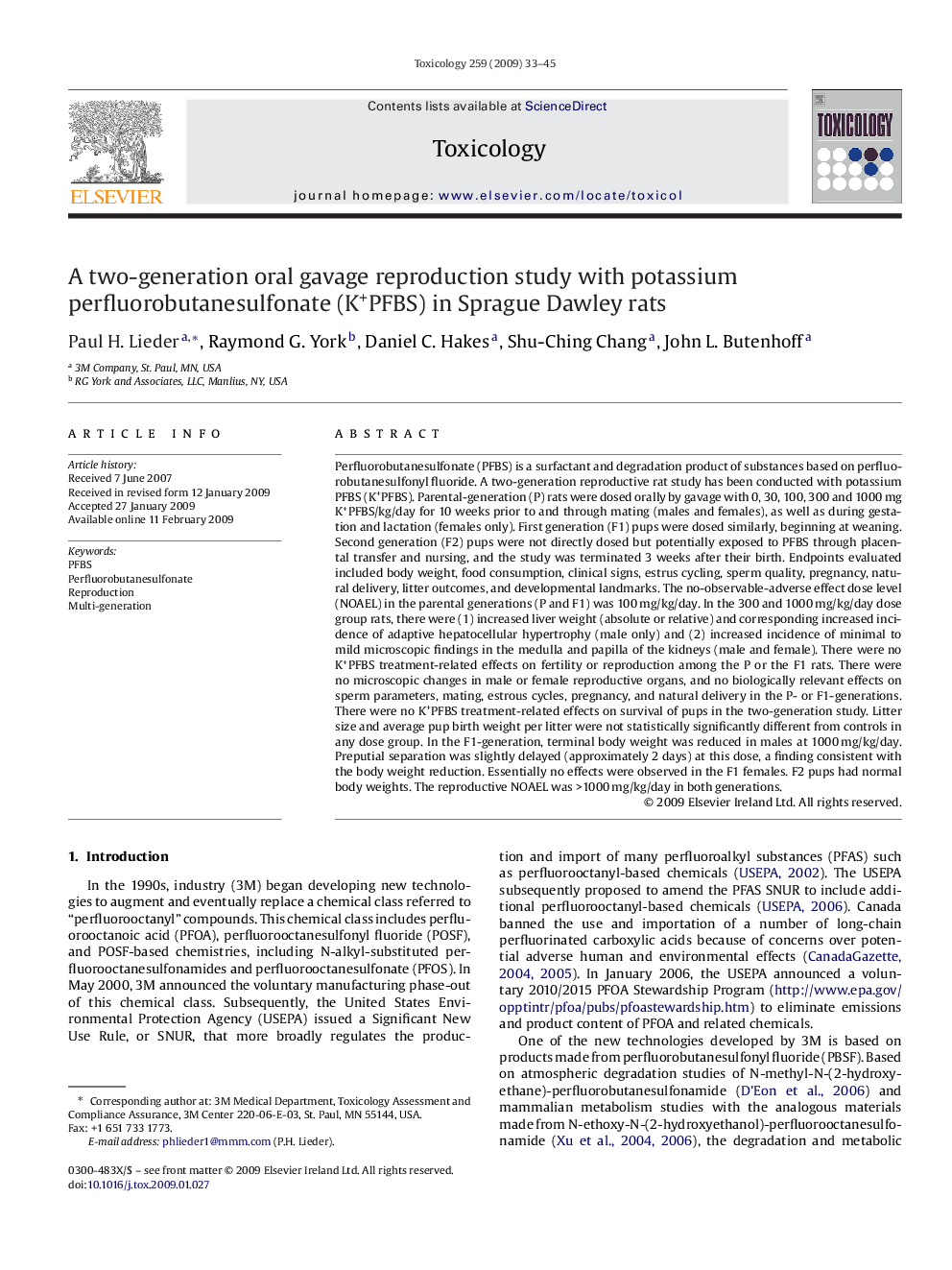| کد مقاله | کد نشریه | سال انتشار | مقاله انگلیسی | نسخه تمام متن |
|---|---|---|---|---|
| 2596786 | 1562396 | 2009 | 13 صفحه PDF | دانلود رایگان |

Perfluorobutanesulfonate (PFBS) is a surfactant and degradation product of substances based on perfluorobutanesulfonyl fluoride. A two-generation reproductive rat study has been conducted with potassium PFBS (K+PFBS). Parental-generation (P) rats were dosed orally by gavage with 0, 30, 100, 300 and 1000 mg K+PFBS/kg/day for 10 weeks prior to and through mating (males and females), as well as during gestation and lactation (females only). First generation (F1) pups were dosed similarly, beginning at weaning. Second generation (F2) pups were not directly dosed but potentially exposed to PFBS through placental transfer and nursing, and the study was terminated 3 weeks after their birth. Endpoints evaluated included body weight, food consumption, clinical signs, estrus cycling, sperm quality, pregnancy, natural delivery, litter outcomes, and developmental landmarks. The no-observable-adverse effect dose level (NOAEL) in the parental generations (P and F1) was 100 mg/kg/day. In the 300 and 1000 mg/kg/day dose group rats, there were (1) increased liver weight (absolute or relative) and corresponding increased incidence of adaptive hepatocellular hypertrophy (male only) and (2) increased incidence of minimal to mild microscopic findings in the medulla and papilla of the kidneys (male and female). There were no K+PFBS treatment-related effects on fertility or reproduction among the P or the F1 rats. There were no microscopic changes in male or female reproductive organs, and no biologically relevant effects on sperm parameters, mating, estrous cycles, pregnancy, and natural delivery in the P- or F1-generations. There were no K+PFBS treatment-related effects on survival of pups in the two-generation study. Litter size and average pup birth weight per litter were not statistically significantly different from controls in any dose group. In the F1-generation, terminal body weight was reduced in males at 1000 mg/kg/day. Preputial separation was slightly delayed (approximately 2 days) at this dose, a finding consistent with the body weight reduction. Essentially no effects were observed in the F1 females. F2 pups had normal body weights. The reproductive NOAEL was >1000 mg/kg/day in both generations.
Journal: Toxicology - Volume 259, Issues 1–2, 2 May 2009, Pages 33–45